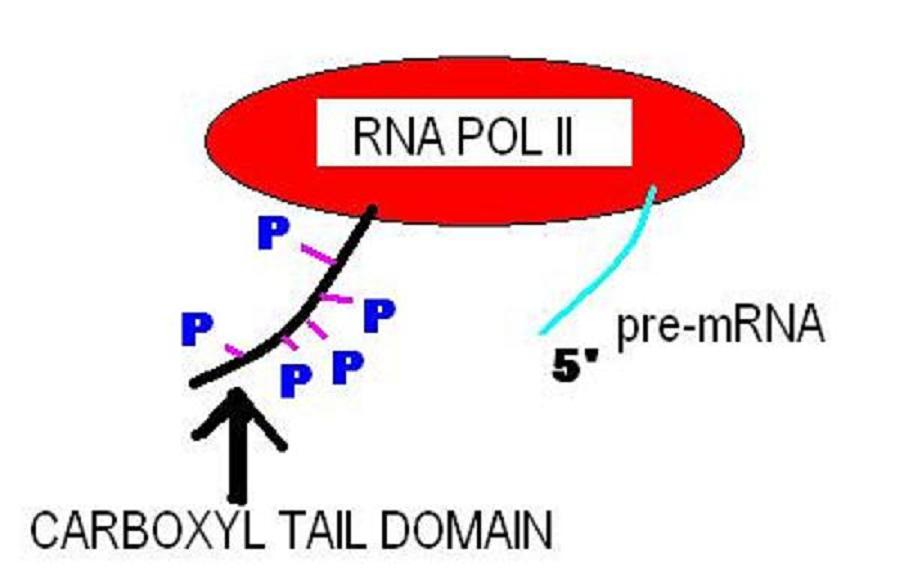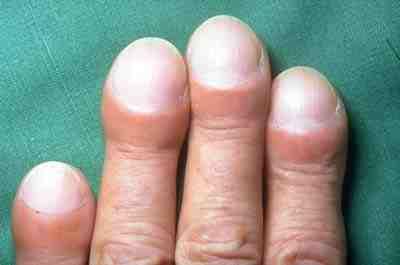|
Autotaxin
Autotaxin, also known as ectonucleotide pyrophosphatase/phosphodiesterase family member 2 (E-NPP 2), is an enzyme that in humans is encoded by the ''ENPP2'' gene. Function Autotaxin (ectonucleotide pyrophosphatase/phosphodiesterase 2 (NPP2 or ENPP2) is a secreted enzyme important for generating the lipid signaling molecule lysophosphatidic acid (LPA). Autotaxin has lyso phospholipase D activity that converts lyso phosphatidylcholine into LPA. Autotaxin was originally identified as a tumor cell-motility-stimulating factor; later it was shown to be LPA (which signals through lysophospholipid receptors), the lipid Lipids are a broad group of naturally-occurring molecules which includes fats, waxes, sterols, fat-soluble vitamins (such as vitamins A, D, E and K), monoglycerides, diglycerides, phospholipids, and others. The functions of lipids incl ... product of the reaction catalyzed by autotaxin, which is responsible for its effects on cell-proliferation. The p ... [...More Info...] [...Related Items...] OR: [Wikipedia] [Google] [Baidu] |
Lysophosphatidic Acid
Lysophosphatidic acid (LPA) is a phospholipid derivative that can act as a lipid signaling, signaling molecule. Function LPA acts as a potent mitogen due to its activation of three high-affinity G-protein-coupled receptors called LPAR1, LPAR2, and LPAR3 (also known as EDG2, EDG4, and EDG7). Additional, newly identified LPA receptors include LPAR4 (P2RY9, GPR23), LPAR5 (GPR92) and LPAR6 (P2RY5, GPR87). Clinical significance Because of its ability to stimulate cell proliferation, aberrant LPA-signaling has been linked to cancer in numerous ways. Dysregulation of autotaxin or the LPA receptors can lead to hyperproliferation, which may contribute to oncogenesis and metastasis. LPA may be the cause of pruritus (itching) in individuals with cholestatic (impaired bile flow) diseases. GTPase activation Downstream of LPA receptor activation, the small GTPase Rho family of GTPases, Rho can be activated, subsequently activating Rho kinase. This can lead to the formation of stress fibers ... [...More Info...] [...Related Items...] OR: [Wikipedia] [Google] [Baidu] |
Enzyme
Enzymes () are proteins that act as biological catalysts by accelerating chemical reactions. The molecules upon which enzymes may act are called substrate (chemistry), substrates, and the enzyme converts the substrates into different molecules known as product (chemistry), products. Almost all metabolism, metabolic processes in the cell (biology), cell need enzyme catalysis in order to occur at rates fast enough to sustain life. Metabolic pathways depend upon enzymes to catalyze individual steps. The study of enzymes is called ''enzymology'' and the field of pseudoenzyme, pseudoenzyme analysis recognizes that during evolution, some enzymes have lost the ability to carry out biological catalysis, which is often reflected in their amino acid sequences and unusual 'pseudocatalytic' properties. Enzymes are known to catalyze more than 5,000 biochemical reaction types. Other biocatalysts are Ribozyme, catalytic RNA molecules, called ribozymes. Enzymes' Chemical specificity, specific ... [...More Info...] [...Related Items...] OR: [Wikipedia] [Google] [Baidu] |
Aptamer
Aptamers are short sequences of artificial DNA, RNA, XNA, or peptide that bind a specific target molecule, or family of target molecules. They exhibit a range of affinities ( KD in the pM to μM range), with little or no off-target binding and are sometimes classified as chemical antibodies. Aptamers and antibodies can be used in many of the same applications, but the nucleic acid-based structure of aptamers, which are mostly oligonucleotides, is very different from the amino acid-based structure of antibodies, which are proteins. This difference can make aptamers a better choice than antibodies for some purposes (see antibody replacement). Aptamers are used in biological lab research and medical tests. If multiple aptamers are combined into a single assay, they can measure large numbers of different proteins in a sample. They can be used to identify molecular markers of disease, or can function as drugs, drug delivery systems and controlled drug release systems. They ... [...More Info...] [...Related Items...] OR: [Wikipedia] [Google] [Baidu] |
Lipid Signaling
Lipid signaling, broadly defined, refers to any biological cell signaling, signaling event involving a lipid messenger that binds a protein target, such as a receptor (biochemistry), receptor, kinase or phosphatase, which in turn mediate the effects of these lipids on specific cellular responses. Lipid signaling is thought to be qualitatively different from other classical signaling paradigms (such as monoamine neurotransmission) because lipids can freely molecular diffusion, diffuse through Cell membrane, membranes (''see osmosis''). One consequence of this is that lipid messengers cannot be stored in Vesicle (biology), vesicles prior to release and so are often biosynthesis, biosynthesized "on demand" at their intended site of action. As such, many lipid signaling molecules cannot circulate freely in solution but, rather, exist bound to special carrier proteins in serous fluid, serum. Sphingolipid second messengers Ceramide Ceramide (Cer) can be generated by the breakdown ... [...More Info...] [...Related Items...] OR: [Wikipedia] [Google] [Baidu] |
Lysophospholipid Receptor
The lysophospholipid receptor (LPL-R) group are members of the G protein-coupled receptor family of integral membrane proteins that are important for lipid signaling. In humans, there are eight LPL receptor (biochemistry), receptors, each encoded by a separate gene. These LPL receptor genes are also sometimes referred to as "Edg" (an acronym for endothelial differentiation gene). Ligands The ligands for LPL-R group are the lysophospholipid extracellular lipid signaling, signaling molecules, lysophosphatidic acid (LPA) and sphingosine 1-phosphate (S1P). Origin of name The term ''lysophospholipid'' (LPL) refers to any phospholipid that is missing one of its two O-fatty acid, acyl chains. Thus, LPLs have a free alcohol in either the sn-1 or the sn-2 position. The prefix 'lyso-' comes from the fact that lysophospholipids were originally found to be hemolytic, however it is now used to refer generally to phospholipids missing an acyl chain. LPLs are usually the result of phospho ... [...More Info...] [...Related Items...] OR: [Wikipedia] [Google] [Baidu] |
C-terminus
The C-terminus (also known as the carboxyl-terminus, carboxy-terminus, C-terminal tail, C-terminal end, or COOH-terminus) is the end of an amino acid chain (protein or polypeptide), terminated by a free carboxyl group (-COOH). When the protein is translated from messenger RNA, it is created from N-terminus to C-terminus. The convention for writing peptide sequences is to put the C-terminal end on the right and write the sequence from N- to C-terminus. Chemistry Each amino acid has a carboxyl group and an amine group. Amino acids link to one another to form a chain by a dehydration reaction which joins the amine group of one amino acid to the carboxyl group of the next. Thus polypeptide chains have an end with an unbound carboxyl group, the C-terminus, and an end with an unbound amine group, the N-terminus. Proteins are naturally synthesized starting from the N-terminus and ending at the C-terminus. Function C-terminal retention signals While the N-terminus of a protein often co ... [...More Info...] [...Related Items...] OR: [Wikipedia] [Google] [Baidu] |
Somatomedin B
Somatomedin B is a serum factor of unknown function, is a small cysteine-rich peptide, derived proteolytically from the N-terminus of the cell-substrate adhesion protein vitronectin. Cys-rich somatomedin B-like domains are found in a number of proteins, including plasma-cell membrane glycoprotein (which has nucleotide pyrophosphate and alkaline phosphodiesterase I activities) and placental protein 11 (which appears to possess amidolytic activity). The SMB domain of vitronectin has been demonstrated to interact with both the urokinase receptor and the plasminogen activator inhibitor-1 (PAI-1) and the conserved cysteines of the NPP1 somatomedin B-like domain have been shown to mediate homodimerization. As shown in the following schematic representation below the SMB domain contains eight Cys residues, arranged into four disulfide bonds. It has been suggested that the active SMB domain may be permitted considerable disulfide bond heterogeneity or variability, provided that ... [...More Info...] [...Related Items...] OR: [Wikipedia] [Google] [Baidu] |
Apo Structure
Protein tertiary structure is the three dimensional shape of a protein. The tertiary structure will have a single polypeptide chain "backbone" with one or more protein secondary structures, the protein domains. Amino acid side chains may interact and bond in a number of ways. The interactions and bonds of side chains within a particular protein determine its tertiary structure. The protein tertiary structure is defined by its atomic coordinates. These coordinates may refer either to a protein domain or to the entire tertiary structure.Branden C. and Tooze J. "Introduction to Protein Structure" Garland Publishing, New York. 1990 and 1991. A number of tertiary structures may fold into a quaternary structure.Kyte, J. "Structure in Protein Chemistry." Garland Publishing, New York. 1995. History The science of the tertiary structure of proteins has progressed from one of hypothesis to one of detailed definition. Although Emil Fischer had suggested proteins were made of polypeptid ... [...More Info...] [...Related Items...] OR: [Wikipedia] [Google] [Baidu] |
X-ray Crystallography
X-ray crystallography is the experimental science determining the atomic and molecular structure of a crystal, in which the crystalline structure causes a beam of incident X-rays to diffract into many specific directions. By measuring the angles and intensities of these diffracted beams, a crystallographer can produce a three-dimensional picture of the density of electrons within the crystal. From this electron density, the mean positions of the atoms in the crystal can be determined, as well as their chemical bonds, their crystallographic disorder, and various other information. Since many materials can form crystals—such as salts, metals, minerals, semiconductors, as well as various inorganic, organic, and biological molecules—X-ray crystallography has been fundamental in the development of many scientific fields. In its first decades of use, this method determined the size of atoms, the lengths and types of chemical bonds, and the atomic-scale differences among vari ... [...More Info...] [...Related Items...] OR: [Wikipedia] [Google] [Baidu] |
Idiopathic Pulmonary Fibrosis
Idiopathic pulmonary fibrosis (IPF), or (formerly) fibrosing alveolitis, is a rare, progressive illness of the respiratory system, characterized by the thickening and stiffening of lung tissue, associated with the formation of scar tissue. It is a type of chronic scarring lung disease characterized by a progressive and irreversible decline in lung function. The tissue in the lungs becomes thick and stiff, which affects the tissue that surrounds the air sacs in the lungs. Symptoms typically include gradual onset of shortness of breath and a dry cough. Other changes may include feeling tired, and abnormally large and dome shaped finger and toenails (nail clubbing). Complications may include pulmonary hypertension, heart failure, pneumonia or pulmonary embolism. The cause is unknown, hence the term idiopathic. Risk factors include cigarette smoking, acid reflux disease (GERD), certain viral infections, and genetic predisposition. The underlying mechanism involves scarri ... [...More Info...] [...Related Items...] OR: [Wikipedia] [Google] [Baidu] |






